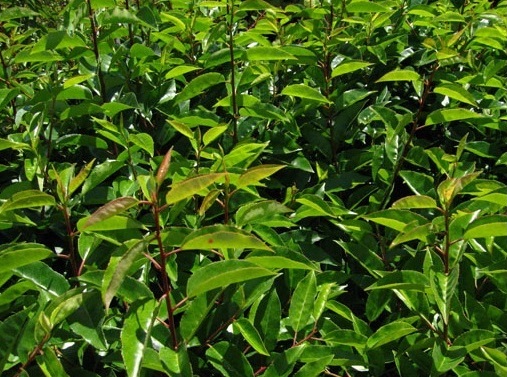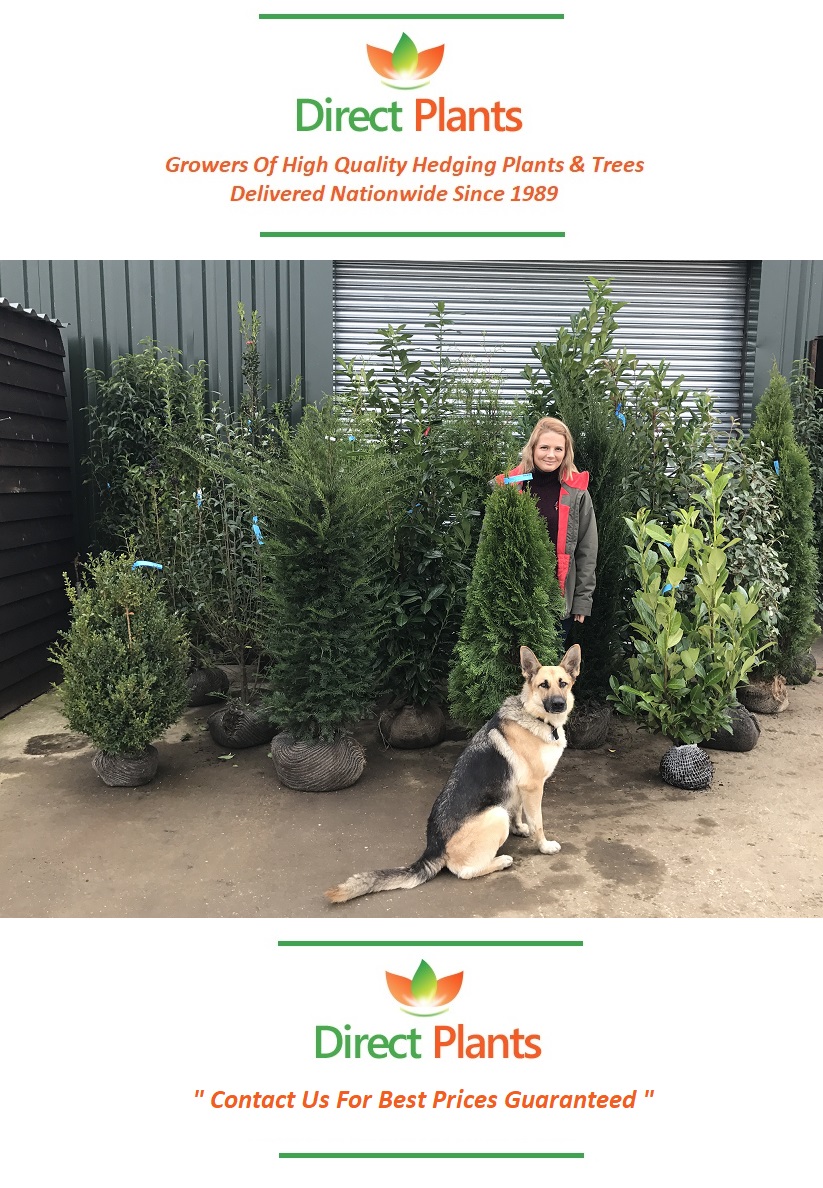A Beginner's Guide to Hedging Trees
Posted by Karina on 6th Sep 2019
Most people enjoy hedging trees in their garden. They create privacy, a safe haven for wildlife and add interest to any garden scheme. But there are so many varieties of hedging plants available so how do you choose the best for you? The best thing to start with is your budget. The bigger the tree the pricier it will be. You may also need someone to help you plant them as they can be heavy.
Another question is root-balled or pot grown? The answer can depend on when you're planting your hedge. Root ball trees are only available from October to beginning of March and must be planted between these times. This is when they're dormant. But pot grown hedging can be planted all year round. At Direct Plants we stock a variety of Hedging trees, the common being the Leylandii and the Laurel hedge. Most hedging plants we sell are evergreen and fast growing.
Our most popular hedging trees
Laurel Hedging

Also known as the cherry or common laurel grows around 2ft per year depending on the conditions it’s grown in. Laurel is the quickest growing hedge that is not a conifer and a great alternative if conifer is not your cup of tea. Taller laurels will create an instant hedge (4ft+) if planted close together.
The foliage is a glossy green with a round shape and sometime produce white flowers followed by black berries. They can be trimmed once a year to keep tidy and provide all year round interest being evergreen. Laurel hedging will grow in full sun and in the shade, they are fully hardy down to -20 and tolerate most soil types. We have these available all year round and root balled October to March.
Green Leylandii hedging trees

The most common hedging conifer and favoured due to its speed of growth, around 3ft per year. It's one of the cheapest variety of hedging plants and very easy to grow. Large trees can create an instant hedge if you’re in a hurry to fill a gap.
If pruned twice a year, Leylandii will create a formal, evergreen hedge and can be kept at your desired height. Leylandii is wind tolerant, making it ideal for exposed conditions and is very hardy down to -30. It'll grow in full sun or partial shade but it's not a fan of very waterlogged soils. We have these available all year round and root balled October to March
Golden Leylandii/Castlewellan:
A more attractive conifer than the green Leylandii. These hedging trees have bright yellow-gold foliage which are retained all year round with foliage turning a bright green in the autumn and bronze in cold winters. Golden Leylandii is not as fast growing as the green variety with growth around 2ft per year. As with the green it can be trimmed to be kept at desired height.
It'll grow in full sun or partial shade and tolerate most soil types except waterlogged. Many gardeners mix the green and golden Leylandii to create a lovely coloured hedge. We have Golden Leylandii hedging available all year round and root balled from October to March.
Portuguese Laurel hedging
Slower than the common laurel in growth it averages around 18inches per year. It's a very attractive hedging plant but a little more expensive to purchase. Creates an excellent evergreen hedge and very easy to maintain. Ideal plant if you would like something different.
The young stems are red which contrast with the green foliage,
fragrant white flowers in the summer. It'll grow in soil in full sun or partial
shade and is hardy down to -20 We have these as root balled between October-March in various sizes and may have some
pot grown available.

Prunus Novita - Cherry Laurel hedging
Novita is a fairly new cherry laurel variety which is very resilient to cold weather and even hardier than the common laurel. It isn't as fast growing as the common laurel sprouting around 1ft per year.
This Cherry Laurel hedging plant has glossy mid-green foliage with white fragrant flowers appearing in the summer followed by black berries. It'll tolerate most soil types but can be a little tricky on chalky soils. Will grow in full sun and shade areas and makes an excellent hedge. It's also excellent for bees. We have limited potted stock, and we have them root balled from October to March.
Photinia Red Robin
A very attractive, evergreen hedging plant that makes an attractive hedge if pruned. The foliage is bright red when young before maturing to green. If pruned in late spring it'll produce a flush of red shoots in the summer.
These hedging trees can be trimmed to any desired height, and averages around 2ft per year in growth. Photinia Red Robin needs a little more maintenance to keep it a nice hedge, so if you have the time and love gardening this one is for you. It's fully hardy down to -15 and will grow in any soil in full sun or partial shade. We have limited stock for hedging requirements but have them available root balled October to March.
Thuja Plicata Gelderland (Western red Cedar)

An attractive conifer which bears glossy leaves that are mid-dark green and hang in graceful sprays. When crushed the sprays are very aromatic. It's a lot slower than the Leylandii in terms of growth, approx. 2ft per year and can produce small cones. Larger trees 4ft+ will create a nice instant hedge.

The Western Cedar is an evergreen hedge which provides all year round interest in the garden and is more graceful than the Leylandii in terms of appearance. It is easily kept at your desired height with trimming and will thrive in most soils and in full sun and semi shade and will tolerate exposed conditions. Thuja is slightly more expensive than the green Leylandii. We have these available all year round or root balled March to October.
The beech- Copper and Green
A deciduous tree that makes an excellent garden hedge, it is one of the slowest growing trees with one to two feet of growth per year depending on the conditions. During the spring fresh green foliage is borne. Dark purple-red foliage appears in the spring before maturing to dark green-bronze in colour (Copper beech). The plant can be kept trimmed in a neat and tidy box shaped hedge
Beech is very hardy but won't grow well in very wet or heavy clay soils. However it will tolerate chalk. Grow in full sun-semi shade. Can be trimmed to your desired height. We only have these root balled available from October to March.
Hornbeam
Hornbeam are excellent hedging trees for soils that are a heavy clay. It's a tough and hardy tree and is a native to the UK. It does look similar to beech but is less demanding in terms of soil types. Hornbeam is deciduous but may retain some leaves that turn brown in the winter months.
Like Beech it can be trimmed into a nice box hedge and can be kept trimmed to required height. It's fully hardy to -30c and will grow in full sun and semi shade. We only have these available as root balled October to March.
Hedging trees from Direct Plants
At Direct Plants we also offer other hedging plants such as
the common holly,
Thuja Brabant, Elaeagnus ebbingei, Privet, Yew, Thuja smaragd
and Buxus sempevirens aka Box plant, field maple and other hedging plants. You'll find our list of hedging here.
Some we only stock from October to March as root ball
specimen trees which are dug fresh to order. So they come fresh from field to you. You can contact
us at
sales@directplants.co.uk
for a competitive quote. We also stock all year round many pot grown hedging trees.
.


